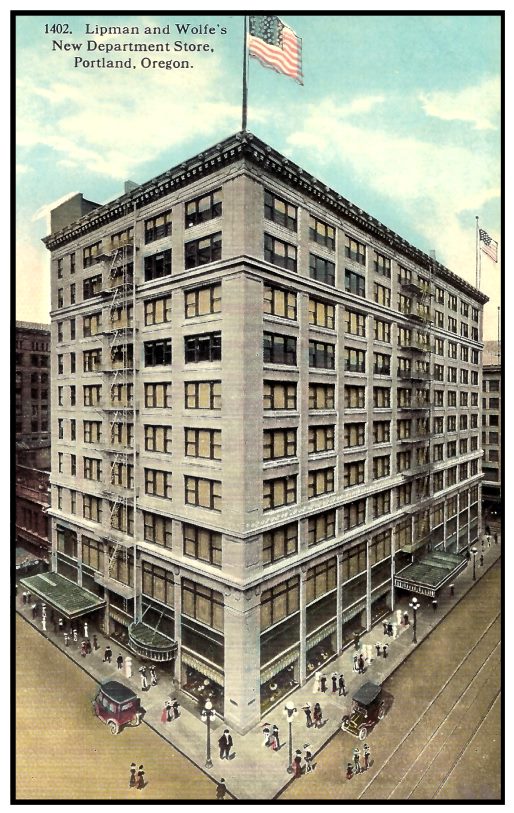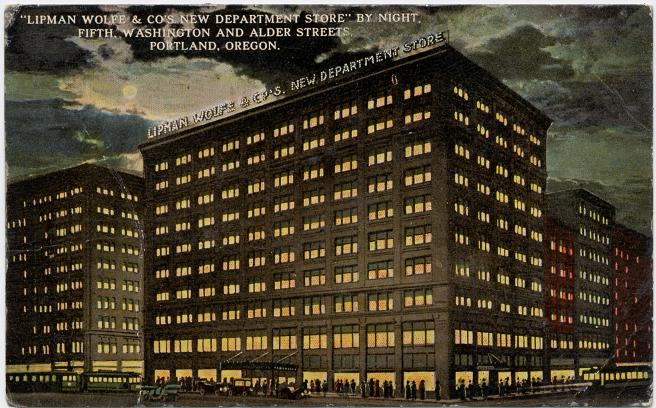|
John Slocum, who worked for three summers in the Chocolate Lounge in the late 1950s, recalls making “Tiger Tigers” (orange ice cream with chocolate swirl syrup in a parfait glass) and “Idiot’s Delight,” several scoops of ice cream of all flavors topped with a sample of all the toppings, including strawberries, chocolate syrup, marshmallows and nuts, etc. in a large bowl.
Also, Brian Thompson, who began working at Lipmans in June 1972 recalls, “the restaurant on the mezzanine had recently been renamed the “Orange Slice” and many regulars still called it the Chocolate Lounge. The manager was a friendly woman named Audrey Snider, and many of the employees and regulars called her Miss Audrey, even though she was married. She was just fine with being called Audrey, too.
I started as a dishwasher, then I became a busboy and a "soda jerk", turning out fountain items like Root Beer Floats and Lime Freezes. The manager of the store's restaurant services was Irene Sleightam, and she personally managed the 8th floor tearoom. We were encouraged to call her Miss Irene.
Another restaurant, The Noon Whistle, opened in 1974 and I was selected to be its manager. It was a small cafe on the 7th floor, next to the Juniors Department, on the south end of the floor. We had a small menu of sandwiches, ice cream and beverages, and we wore a striped overall uniform over a white T-shirt.
I was a substitute Cinnamon Bear and don't remember doing it more than maybe three times. The store brought out Santa Claus and the Cinnamon Bear only for the period between Thanksgiving and Christmas. John Hillsbury, a local Portland actor, was Santa Claus for many years and had a huge following. He had a knack for remembering kids' names and they were always so thrilled when he'd call them by name from previous years' visits.
The Cinnamon Bear was usually my friend Richard Schaeffer, who in non-holiday periods did a lot of carpentry and window display work around the store. I only filled in when Richard couldn't be there. Richard and John are both deceased as far as I know.
I remember one Cinnamon Bear experience in particular, and it was a "special" appearance at the Washington Square store on a very hot summer day for some sort of promotion. I wore the huge, heavy, and hot bear suit and walked around the store handing out cinnamon cookies to kids.
At one point, I got so hot I needed to dive under a "rounder" of clothes and take the head off, just to get some air. The other times I wore the suit were at the downtown store during winter holidays. I remember Santa and I had our space on the 4th floor, near the young men's department.”
When the store was still Lipman’s in the 1960s and 1970s, they had a Lunch Counter on the Mezzanine as well as a Men’s Pub. In the Tearoom they would even serve Dinner Buffets with really good Prime Rib. The Chef’s name was Tweedy and there was a Asian chef. The baker was Joan. In the late 60s, the staff wore white waist coats, black pants and bow ties.
I remember eating lunch on the tenth floor Tearoom a couple times a week in the 1980s. Frederick & Nelson had the best service and the best lunch in town. One of my favorite items on the menu was the Montague Sandwich, the bigger brother of the Monte Cristo.
The Cinnamon Bear was welcomed at Frederick & Nelson and the tradition continued until Frederick & Nelson went out of business. In 1986, when Frederick & Nelson was sold to Seattle investors, this store and five other Frederick & Nelson stores were shuttered. The only store that remained open in Oregon was at Washington Square. It was closed in 1990 and was subsequently rebuilt as a Nordstrom store. Frederick & Nelson went bankrupt after 101 years in business in 1992.
A special word of thanks to John Slocum for sharing his memories of working in the Chocolate Lounge in the late 1950s and Don Walls, now of Spokane, who shared his memories of working at the Tearoom in the 1960s and ‘70s while he was attending Lincoln High School. Thanks also to Brian Thompson who shared his memories of working at Lipmans from 1972 to 1977.
|










